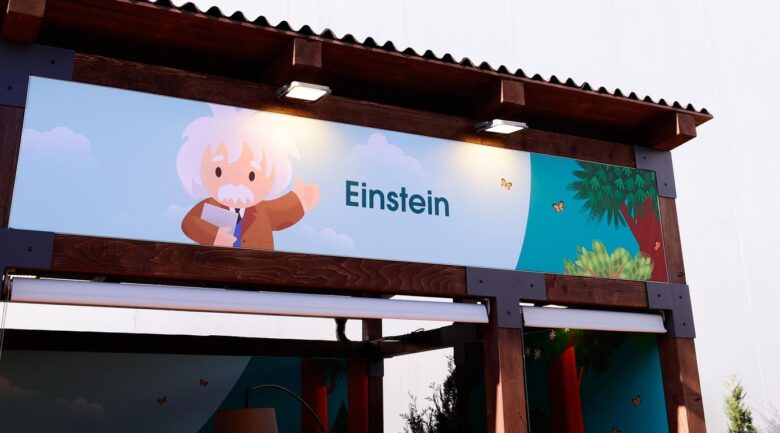Tom Weber knows that answering the phone is a part of being in business. If he wants to get and maintain clients for Christmas City Landscaping and Tree Service, it’s vital to stay connected.
However, picking up every call, especially when he was at a worksite, became an unwanted distraction, Weber said.
“It was taking away productive time on a job where I could be leading a crew, and it was taking away focus on that job,” Weber said.
Now if you call Christmas City Landscaping, what sounds like a woman may answer. She talks to you, asks questions and has a local accent when she says your town’s name. There’s no pressing buttons or an impersonal robotic voice asking you to leave a message. But she’s not human.
Weber is using a program aptly named Answering Machine. For about $20 a month, it acts as a receptionist that can set appointments and even advertise specials.
“We love it,” Weber said. “It’s taking time away from actually answering the phone to just focusing more on detail-oriented work and making customers and potential customers happy. I can go out there, especially during spring rush, when we’re just constantly out there sunup to sunset.”
Answering Machine is just one example of how small businesses in the Lehigh Valley and beyond have begun using artificial intelligence.
Michael Rivera, an assistant professor of business information systems at Lehigh University’s Department of Decision and Technology Analytics, said AI technology is on a logical progression toward companies that may only have a handful of employees.
“The shift from large to medium to small is sort of happening right now,” Rivera said. “I think there’s been enough proliferation of different kinds of tools. They’re becoming more affordable. They’re easy for a small-business owner to integrate.”
Rivera said owners should see what type of technology is available and how it can help their businesses. Some may be motivated to take the lead and get in on the ground floor of AI.
“I think there’s a lot of opportunity and return on investment for them to be gained,” he said. “They want to take advantage of that now and they want to be leading that innovation and not really lag in adopting and figuring it out.”
The U.S. Chamber of Commerce noted last fall that 98% of small businesses are utilizing at least one tool that is enabled by AI, with the use of generative AI tools such as chatbots and image creation nearly doubling to 40% from last year.
‘More impressive’
Jake Jolis, a tech entrepreneur whose company developed Answering Machine, was inspired after an experience with a previous business that didn’t have a call center. It had a million registered users, Jolis said, but the listed contact number was his personal cellphone number.
He was receiving calls from customers all hours of the day and night and they continued after he left the company. In his experience with tech companies, Jolis noticed how AI was improving customer service.
“We’ve all had those bad experiences when it’s a robot saying, ‘Press one, press two,’ or it’s not understanding the words that you’re saying,” Jolis said. “It’s a mess. Eventually that stuff started getting really, really good, and the demos were more and more impressive.”
Using those enhancements to the technology, Answering Machine was born. Jolis said the idea was to create an app that can be operated simply by businesses that are too small to have their own call centers. The owner can program Answering Machine in just over a minute through the app, which also reads over the company’s website to learn about it.
“This is for the smallest businesses,” Jolis said. “Businesses that operate out of a truck and do things like snow removal, landscaping, plumber, electrician, home services. It’s the people that keep heat in our homes and make sure the lights turn on.
“They get business from the phone right when it rings,” he said. “If you miss it, it could be a missed new customer lead.”
Businesses are using AI for more than answering the phones.
Jagriti Dawar, branch president for RobotLab of Eastern Pennsylvania, said technology has been evolving over the past decade.
RobotLab, which Dawar runs with her sister Kripa, offers AI robots that can do things such as take and deliver orders or clean.
For those who may be hesitant to adopt AI, Dawar notes that cellphones use it.
“When people are like, ‘Oh, I’ve never engaged with a robot,’ your phone is essentially a robot,” said Dawar, who graduated from Northampton Area High School and attended Moravian University. “It’s picking up information. It’s holding information. It’s providing information. … It does everything. Technology has grown.”
Her company offers a robot named Pepper that was first produced in 2014 for business-to-business jobs, but was later adapted for customer service. Like the AI that’s always learning, technology companies like RobotLab also are updating programs.
“We’re coming out with new models, working with the manufacturers all the time,” Dawar said. “We see what’s going out in the field, what’s working and what’s not working for different clients as a whole.
“If there’s something not working for the restaurant industry and they are having the same problem with delivery, we can go back to the manufacturer and be like, ‘Hey, we need this a little updated or fixed,’ and the manufacturer will take that into consideration and make those changes for us,” she said.
‘Not to replace anyone’
Not surprisingly, customers should expect to see more robots in the future.
Kripa Dawar, who attended Northampton Community College, said robots will be used for such things as cleaning restaurants, giving relief to the waitstaff that spend the ends of shifts tidying. Hospitals can implement robots as custodial staff members retire.
“So there’s definitely a case for using them in all types of those things,” she said. “A lot of it is cleaning. Arenas like the PPL Center can easily use a security robot that has metal detectors for their big events, people going in and out of that bag check, security checks. You have a security robot patrolling the main lobby, it has AI facial recognition that picks up on any suspicious activity when it’s patrolling.”
Jagriti Dawar said the purpose of using robots is to complement the human workforce, not replace it.
“It’s really all automation to help a business owner,” she said. “It’s not to replace anyone. It’s really to have the business owner see a return on their investment and just have a more efficient business process overall.”
Lehigh’s Rivera concurred, saying that while “the fear of being replaced is natural,” it’s a good way to free human labor from repetitive tasks.
“Those kinds of tasks are really right for being automated, but you’re not going to replace the human that is sort of overseeing and managing them,” he said. “It’s just an opportunity to do more and to do better and to really help companies have some competitive advantages. Small businesses need it. They’re in a very competitive landscape with larger companies and more resources. So you know, this can be something that they can adopt easily and quickly, that can give them at least a temporary edge and advantage.”
For Weber, it’s simply having peace of mind about gaining and maintaining customers and not getting left behind by competitors.
“We didn’t want to miss any calls because of the fast-paced, modern world that we live in,” he said. “I’m Gen Z myself, so I know if I’m calling to get my house painted outside, I’m going to use Google. I’m going to the first person, good reviews. If they don’t answer, boom, I’m going to the next person.
“People don’t want to leave messages anymore.”
Morning Call reporter Evan Jones can be reached at ejones@mcall.com.




